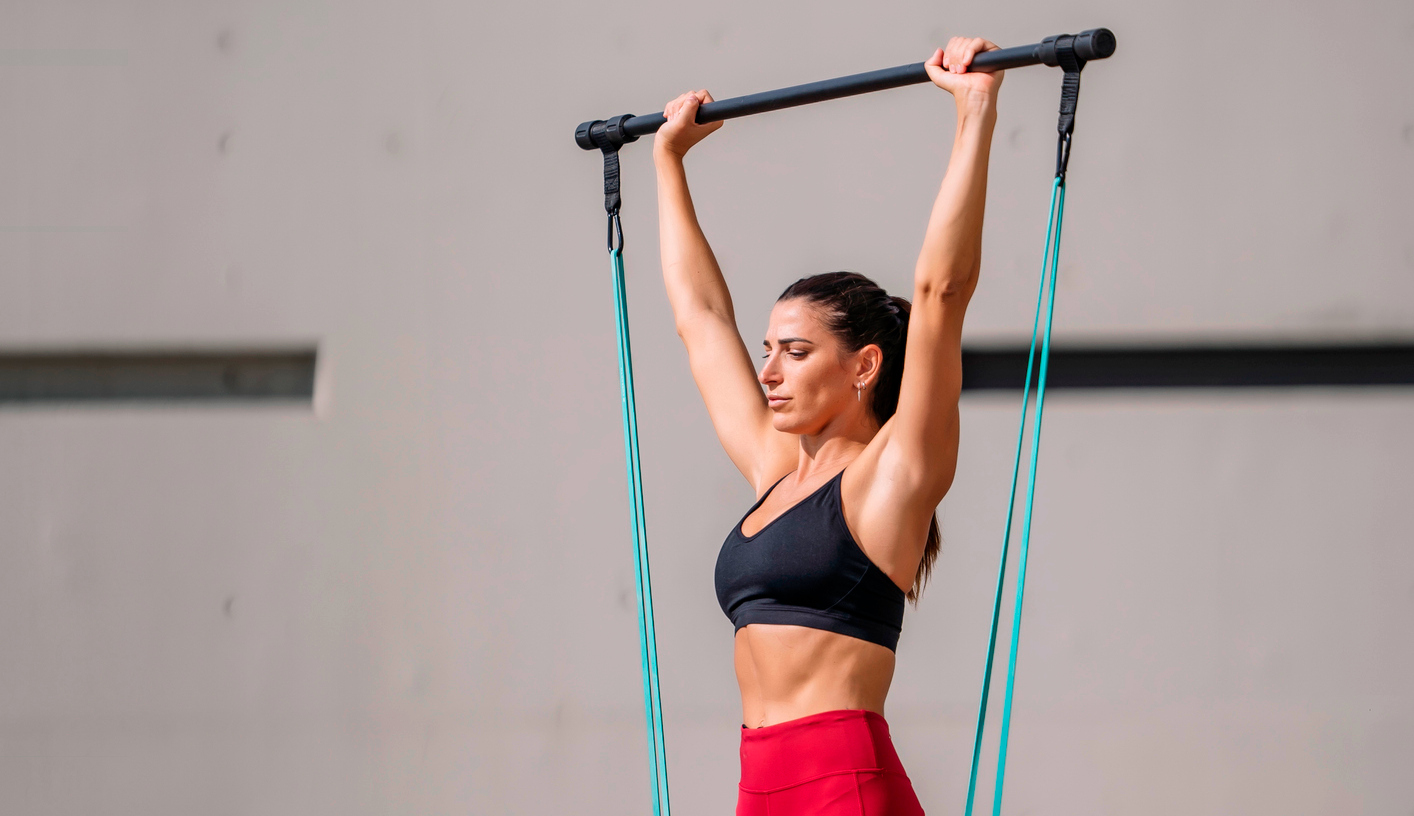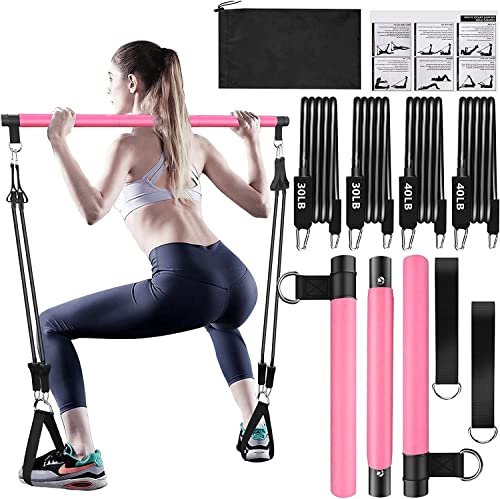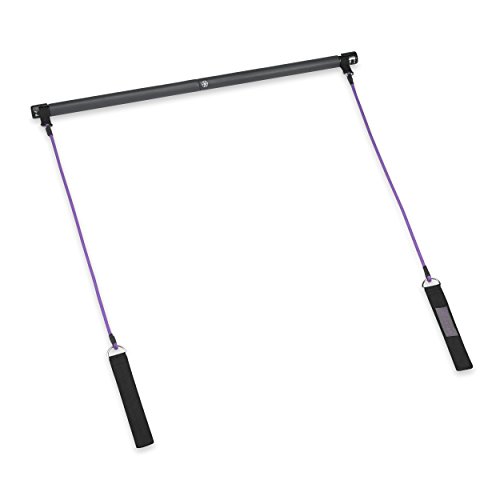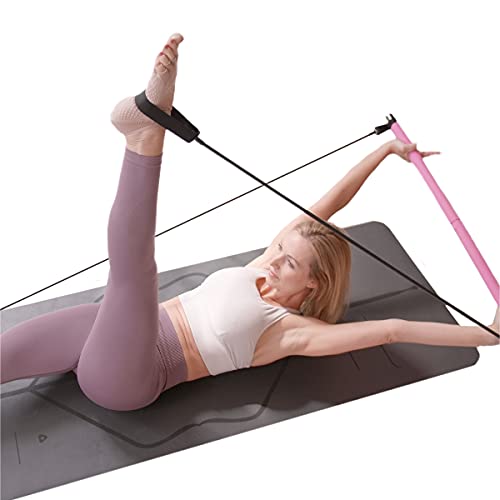
There is no shortage of online Pilates workouts to get you started with this ever-popular low-impact style of exercise. After wall Pilates and hot Pilates, the latest variation of Joseph Pilates' popular method of bodyweight training comes in the form of Pilates bar routines.
Some say Pilates bars can do the same job as a reformer machine for a fraction of the cost—a Pilates bar can cost as little as $20 while home reformer machines cost thousands—but how do they work and are they really as effective? I asked two experts to find out. Here’s what they said.
What is a Pilates bar?
"The Pilates bar is a fantastic accessory that replicates reformer-based movements without the need for a reformer machine itself," says Lottie Anderson, founder of Bondi Rise. "It features a bar with two straps on either side, mimicking the straps found on a reformer, offering a versatile and convenient alternative to the machine."
Unlike the reformer machine, Pilates balls and magic circles, which are part of the traditional Joseph Pilates method, a Pilates bar isn't official equipment, but that doesn't mean it can't support your workouts.
One of the key benefits of a Pilates bar is that it can add variation to mat-based Pilates, mimicking many reformer moves at home, without investing in an expensive studio membership or reformer machine. For beginners, a Pilates bar can also help with posture and stability when performing slow and controlled movements.
By adding an element of resistance into your workouts, Pilates bars can improve strength, flexibility, and balance just like a reformer machine, says Paola Di Lanzo, founder of Paola's Body Barre.
How to use a Pilates bar
There are lots of different ways a Pilates bar can take your workouts up a notch. “Adding a Pilates bar to squat workouts is a great and effective way to elevate your squat. You simply place the bar across your shoulders and slip your feet into the loops for added resistance,” says Anderson. “Alternatively, you can lie down on the floor, hold onto the bar while your feet are in the loops to engage in leg extensions, effectively targeting your abdominal muscles.”
Pilates bars can also be used in chest presses and add extra resistance to leg lifts. For a better idea of what a Pilates bar workout entails, here are a few of my favorites.
15-minute Pilates bar workout
This beginner-friendly at-home Pilates bar workout is just 15 minutes but you will feel the burn after just a few minutes. Part of a five-day challenge run by Pilates teacher Jacinta from Posture Tonic, it focuses on building full-body strength, improving posture and enhancing flexibility.
Full-body workout with a Pilates bar
@move.with.margie ♬ Love Grows (Where My Rosemary Goes) - Edison Lighthouse
Another full-body workout, this routine from fitness coach Move With Margie shows how you can incorporate six reformer-style Pilates movements into your at-home workout routine using just a Pilates bar to work your whole body.
25-minute arms and legs Pilates bar workout
For a longer workout, check out Pilates by Kristina’s 25-minute bar routine focusing on working the arms and legs. It's a great place to start if you’re new to Pilates or beginning to add resistance to your workouts for the first time.
What to look for when buying a Pilates bar
When shopping for a Pilates bar the experts suggest looking for bars made from sturdy materials like aluminum, ensuring they are still lightweight so they’re easy to use, store and travel with. "You should also look for bars with adjustable resistance bands and additional attachments so you can perform a wider range of exercises," says Di Lanzo. "Choose bars that have non-slip grips for comfort, too."



Pilates bar vs Reformer: Which is better?
The bar is certainly cheaper, easier to store at home and can help you build strength, but it may only take you so far in your Pilates journey. “A reformer machine offers more versatility, can support more Pilates movements and there are more options for different exercises than with a bar,” explains Anderson.







